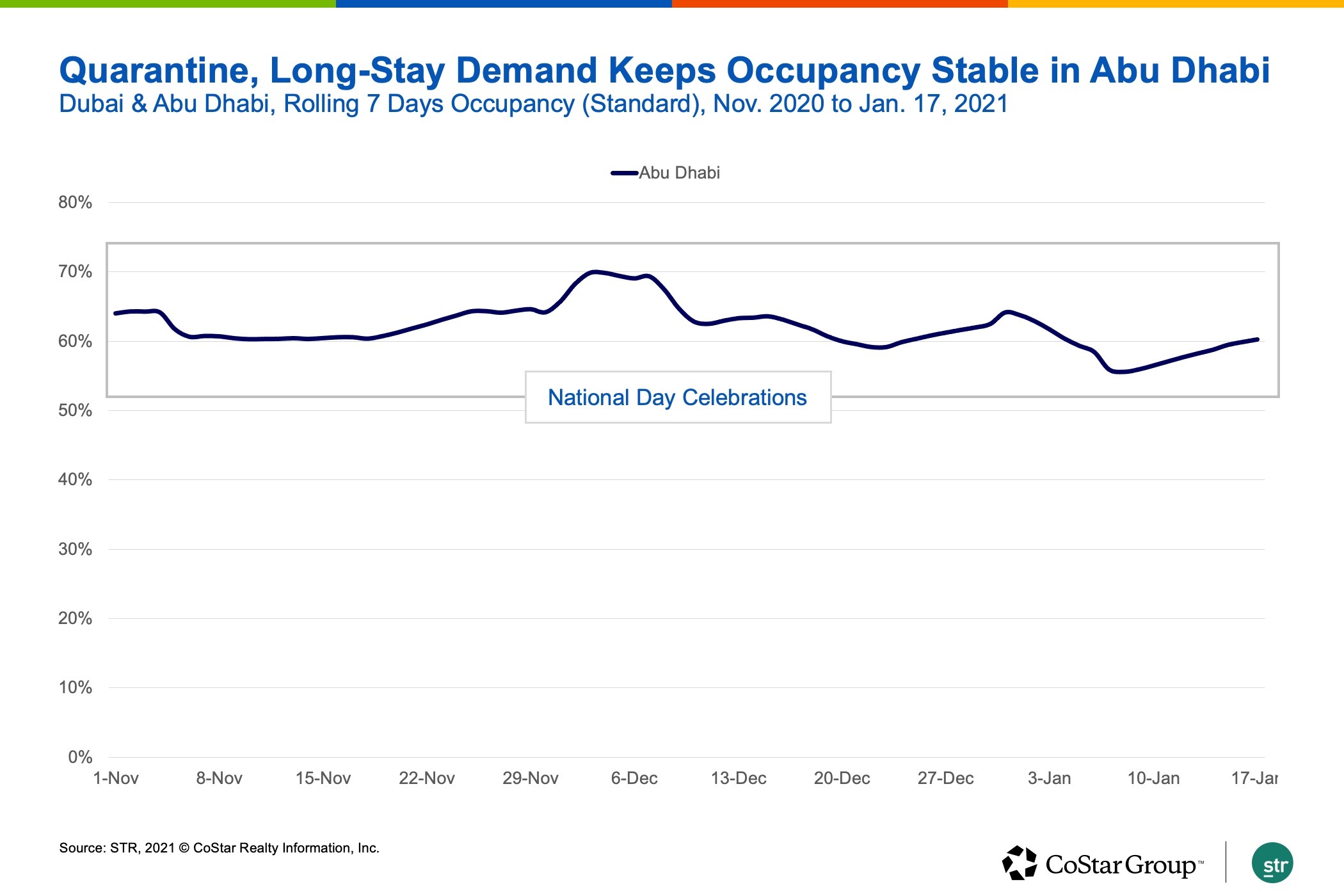Global hotel performance in 2020 and for the early part of 2021 has varied as much as each region's response to the COVID-19 pandemic.
While no country was spared the impacts of COVID-19, the effect on hotel performance was more or less severe depending on location, pandemic mitigation efforts and sources of demand.
This analysis breaks down five things to know about global hotel performance in the year that broke the charts.
Closure Conundrum
Temporary hotel closures are one of many COVID-19 necessities that were nonexistent in the hospitality industry prior to 2020. Historically, hotels are open, closed for renovation or permanently closed. However, in 2020, a combination of incredibly low demand and in some cases government mandate led hotels to temporarily shut their doors to guests.
In Europe, hotel closures started in late March, and by April only 40% of hotel rooms across the continent remained open. Hotels reopened over the summer as lockdowns ended, weather improved and some small portion of leisure demand returned.

As summer waned, vacation season ended and cold weather began to force indoor gatherings, caseloads across the continent started to rise and a second wave of COVID-19 began. As countries instituted new lockdowns, hotel closures again rose throughout Europe.
Europe was not the only region where temporary hotel closures had an impact. China is back to targeted lockdowns, Japan declared and then expanded a state of emergency, and Bogota and Medellin both instituted new stay-at-home orders even as Colombia ruled out a second lockdown.
Beaches Beckon
Central and South American hotel recovery was limited to nonexistent in 2020.
In South America, however, hotel occupancy during the warmer months reflected a desire and willingness to travel that is essential to recovery.
Beaches across the continent are starting to fill with guests ready for a vacation and time away from home. This trend is not new: Florida in the U.S., Dorset and Somerset in the United Kingdom, and the Baltic Coast in Germany all enjoyed high occupancies over the summer months as holidaymakers followed World Health Organization guidelines and flocked outdoors.

Seaside destinations Cartagena and Rio de Janeiro highlight the phenomenon well, and occupancies have steadily climbed as the weather has warmed.
Compared to interior markets Buenos Aires and Sao Paulo, the distinction is stark. These markets have evinced minor recovery but still hover around the 20% occupancy mark, while Cartagena and Rio fight for the honor of breaking 50% occupancy first.
Check-In With China
Chinese New Year 2020 made the world sit up and pay attention to the novel coronavirus, and following an extremely strict lockdown, the country recovered hotel occupancy relatively quickly.

In fact, China has performed so well that using actual hotel occupancy as a recovery metric isn’t such a great idea. All those dips and dives from September through the end of the year reflect seasonality, beginning with exaggerated occupancy swings during the Mid-Autumn Festival and National Day, and ending with the normal winter slowdown in November and December.
Unfortunately, a new COVID-19 spike in Hebei forced lockdowns in one of Beijing’s closest neighboring cities, and occupancy in both markets has consequently fallen over the first few weeks of the new year. This has happened before — with a dip in July 2020 — so potentially another strict lockdown will help hotel performance bounce back relatively quickly.
The Importance of Domestic Demand
It’s not just China with strong hotel performance right now. Australia also has high occupancy compared to many countries around the world. However, in year-over-year comparisons, occupancy is down by a lot. December occupancy in Australia was down 18.3 percentage points from 2019.

This could certainly be worse, but December is Australian summer, with commensurate school breaks and warm weather. Following intense lockdowns, COVID-19 caseloads are manageable and domestic travel is allowed to some extent; however, Australia is still inaccessible for most of the world.
According to data from Oxford Economics, almost 47% of nights spent in all accommodation types in Australia were by international visitors. Compare this to China, where international travelers accounted for only 12% of overnight stays. Australia — at in least the larger capital markets — is reliant on international demand, and that’s clear at the national level.
This dichotomy highlights some of the challenges the hospitality industry will face this year. Recovery stories are beginning to diverge across countries, and how we think about, look at, and examine the data will need to shift yet again.
Comparing absolute occupancies at hotels across various regions may no longer be the best way to track recovery, but year-over-year comparisons are going to look unusual in another month or two. Unfortunately, there's no one right answer for how to look at data.
Quarantine Demand Drives Occupancy
Like temporary closures, quarantine demand is a new, COVID-19-related term. In some markets like Abu Dhabi, all incoming visitors are required to quarantine in a hotel for two weeks upon their arrival, and it’s this quarantine demand that has lifted occupancy in the market into the 60% range.
Abu Dhabi hotels rely on business travel to drive demand in normal times, and prior to the pandemic, weekday occupancy hovered 3 to 5 percentage points above weekend occupancy. This trend continued throughout 2020, with weekday demand 2 percentage points higher than weekend demand, but it’s the market’s strict quarantine laws that are helping hotel occupancy and reducing that weekday-weekend gap.

For the past three months, occupancy has hovered around 60% in large part due to the quarantine demand generated by business travel, and the trend appears set to continue through 2021.
Abu Dhabi is not the only market helped along by this unique source of demand: Australia and Canada both have similar policies.
Letizia Rossi-Espagnet and Kelsey Fenerty are research analysts at STR.
This article represents an interpretation of data collected by CoStar's hospitality analytics firm STR.
